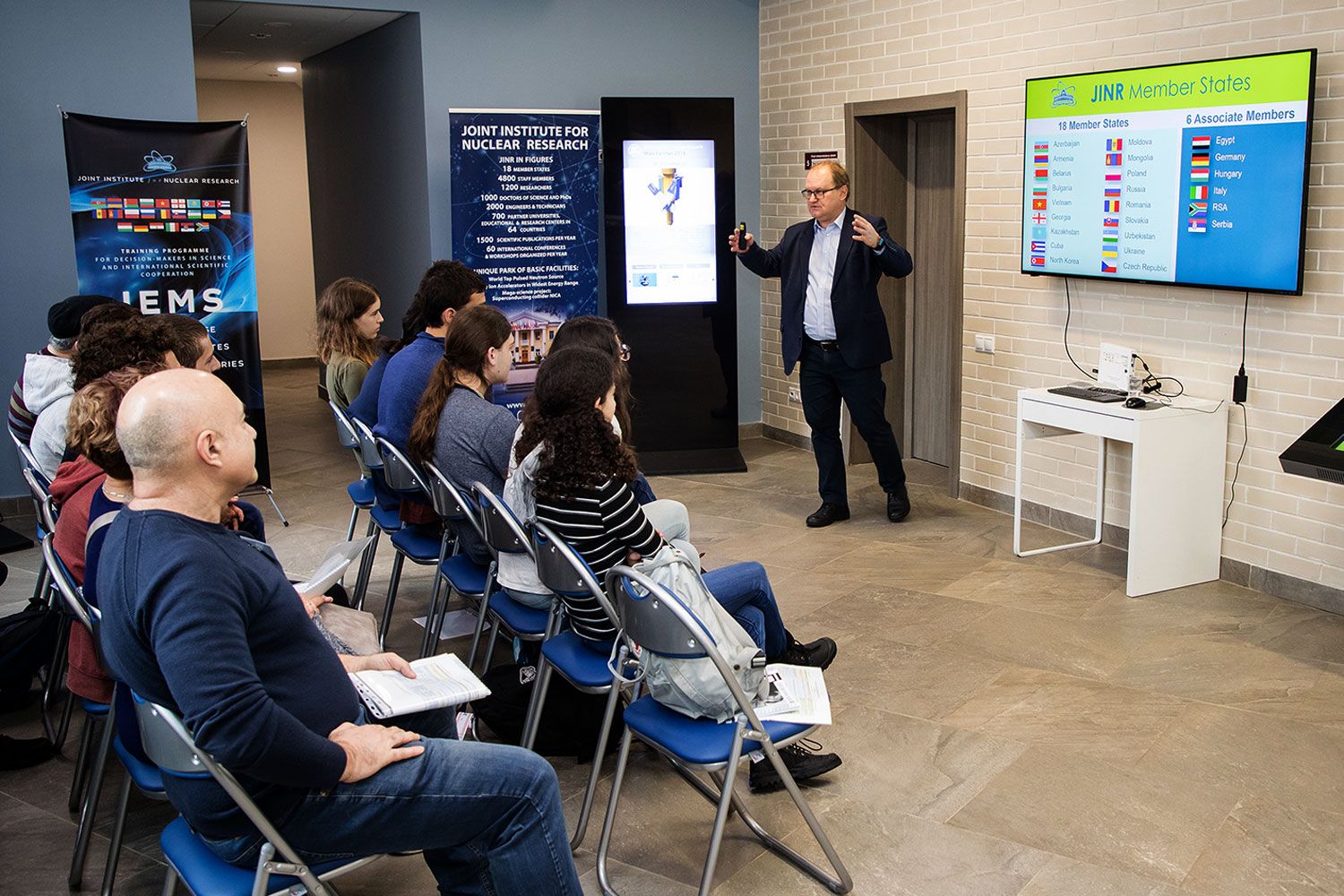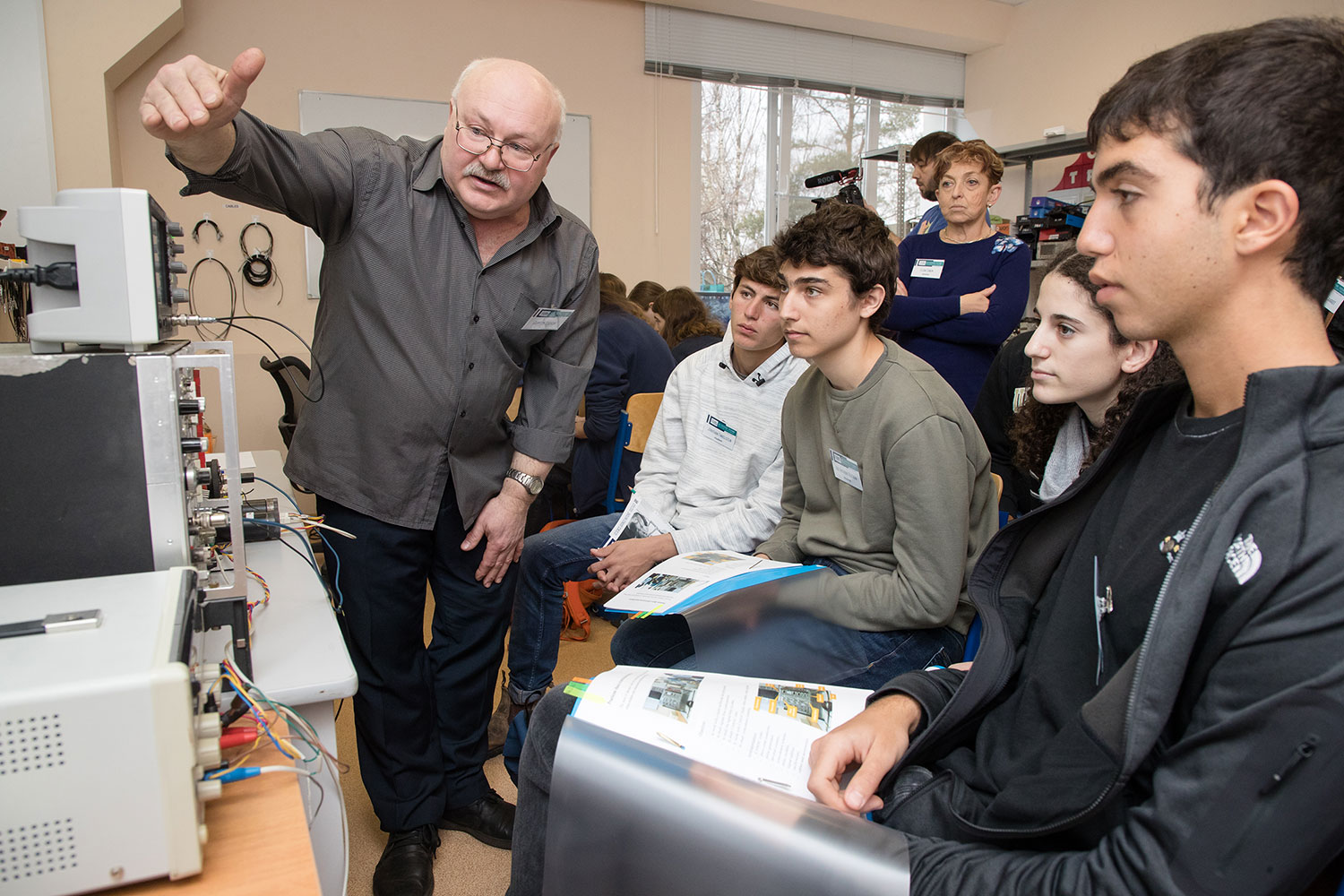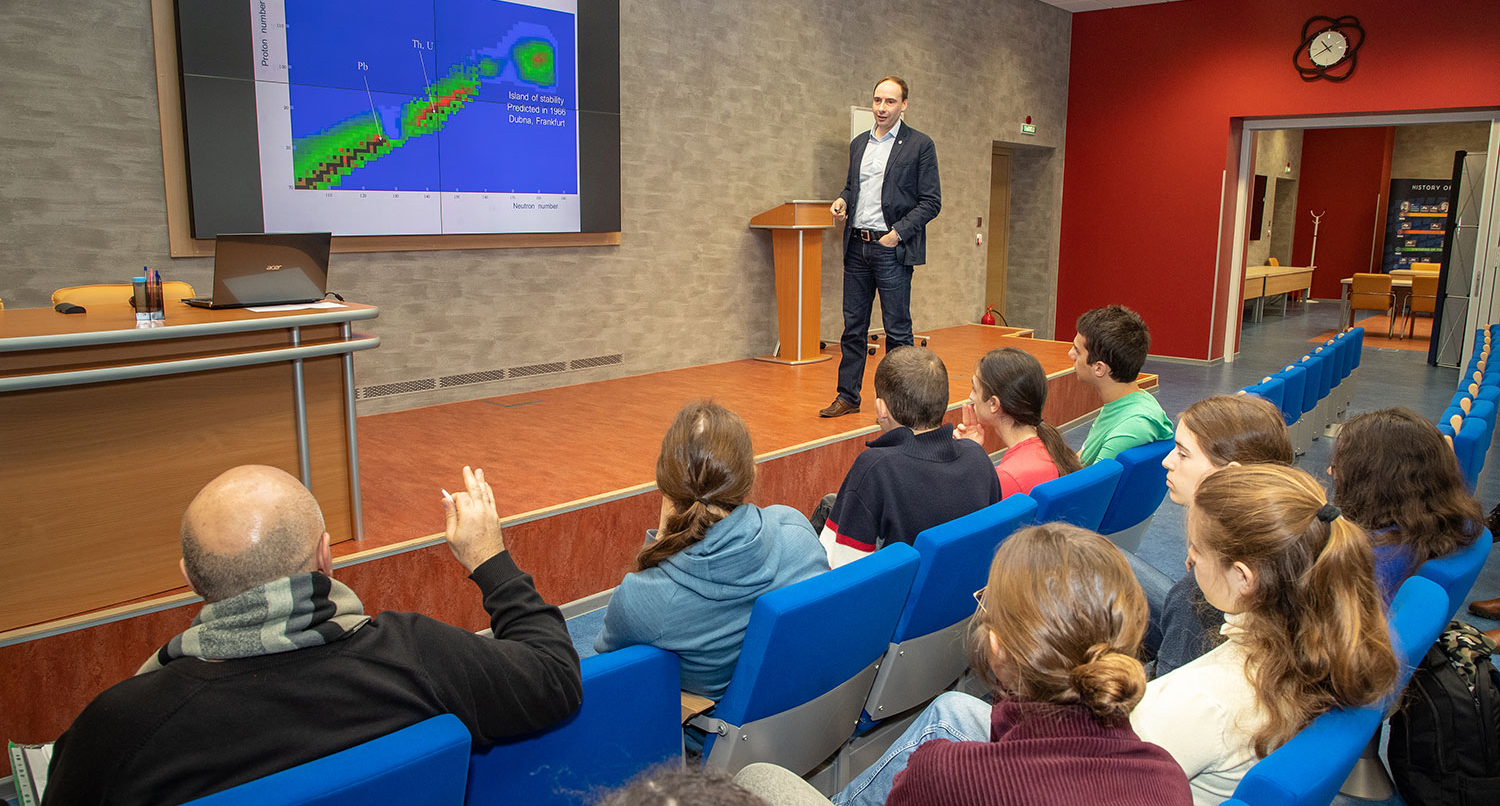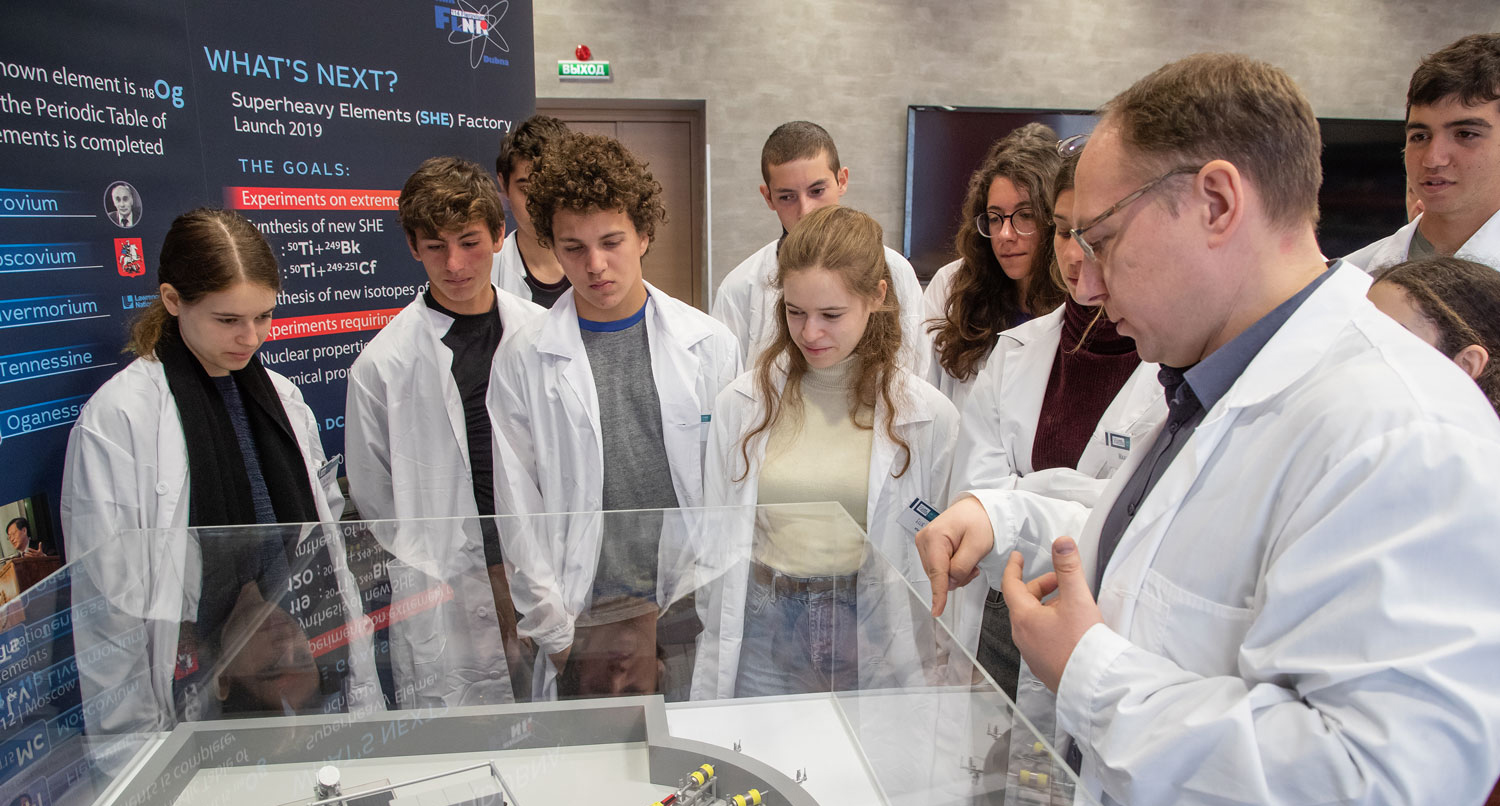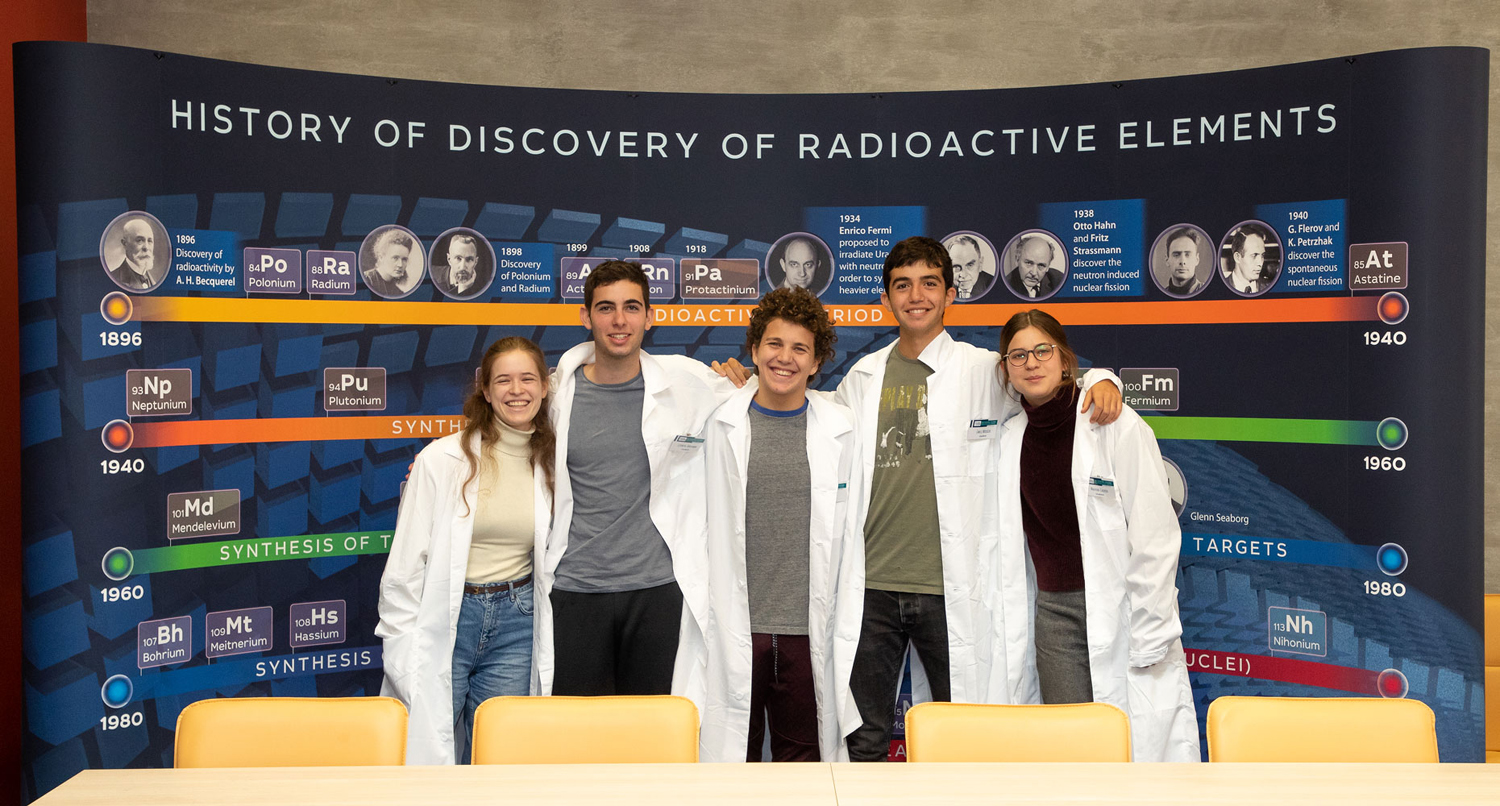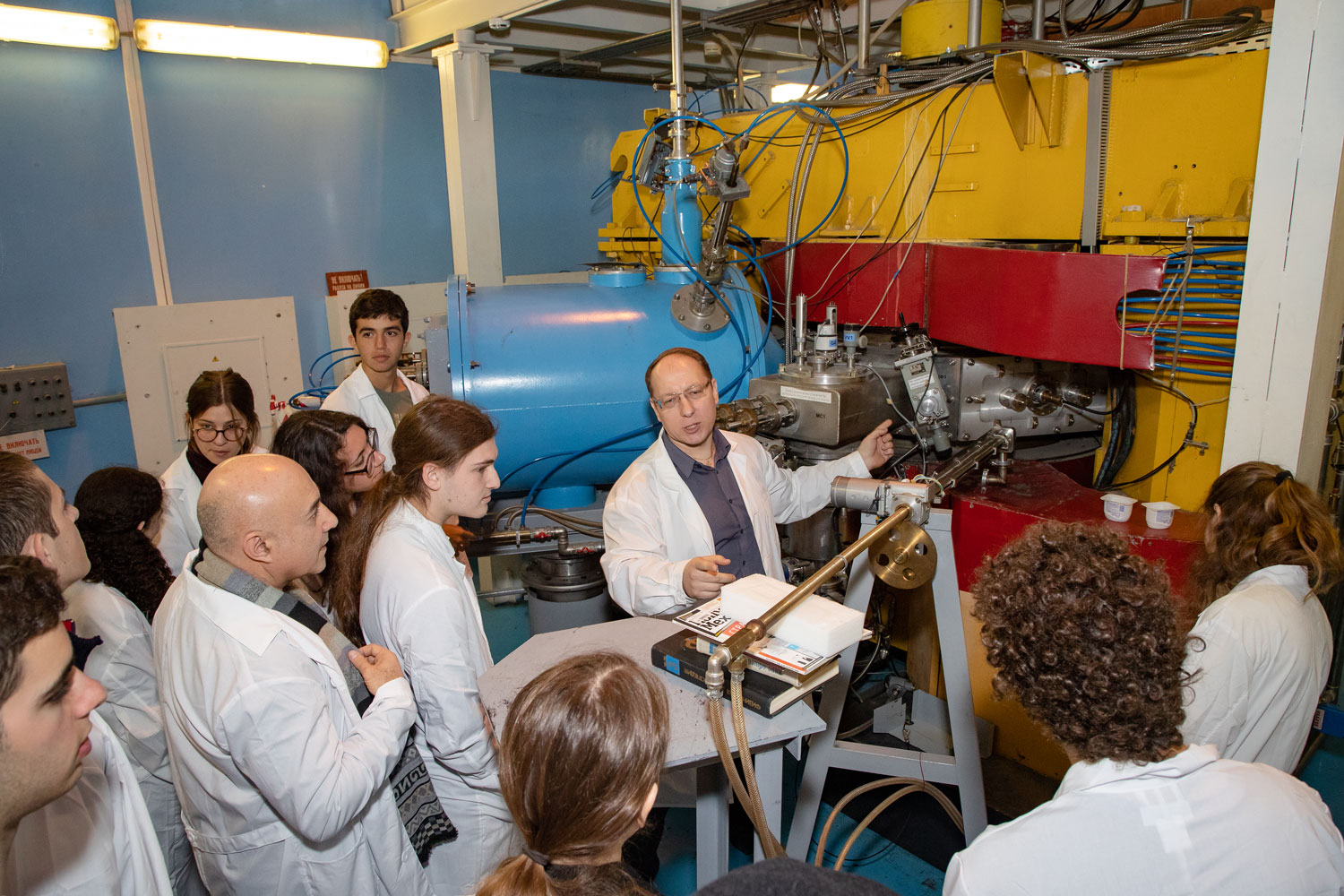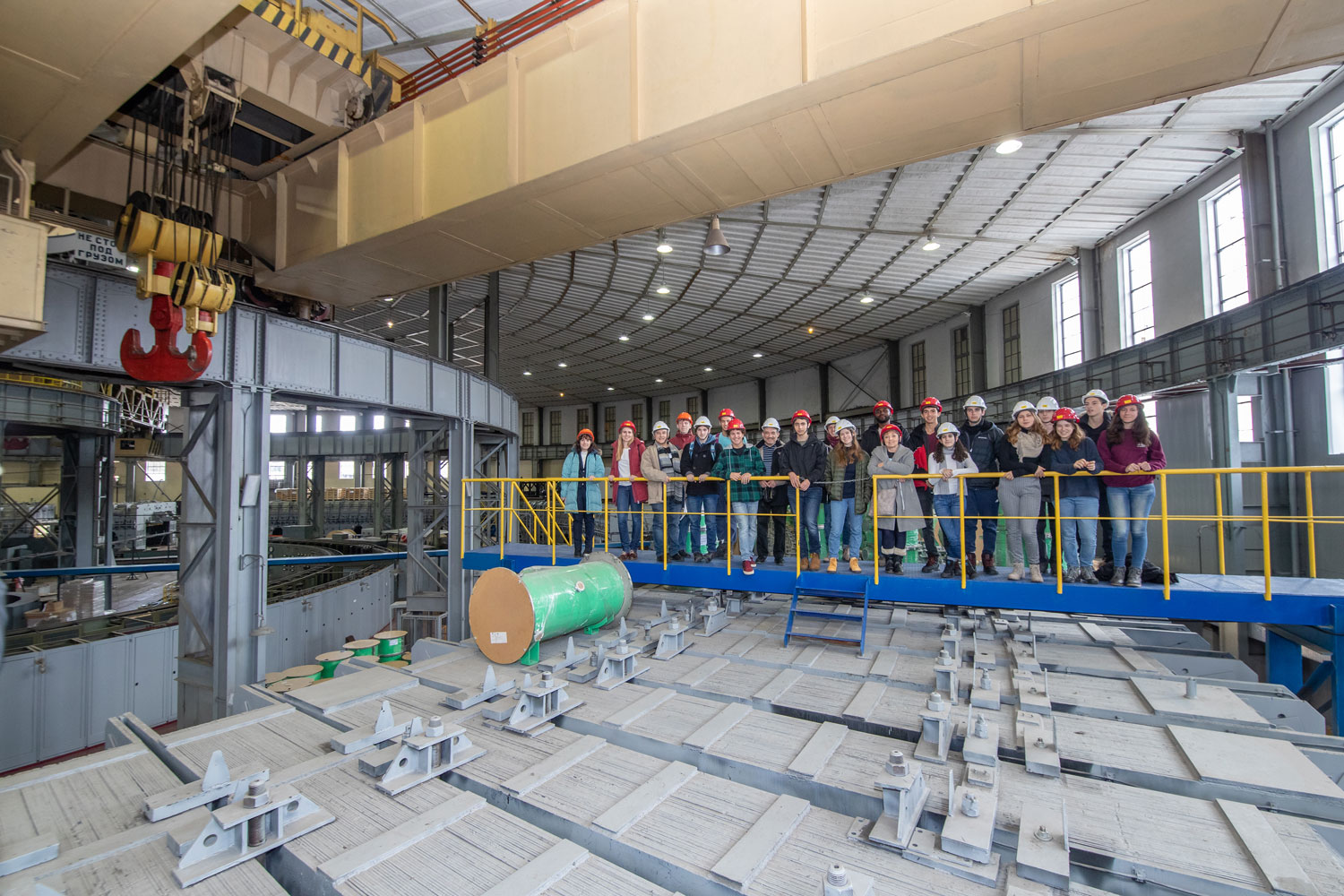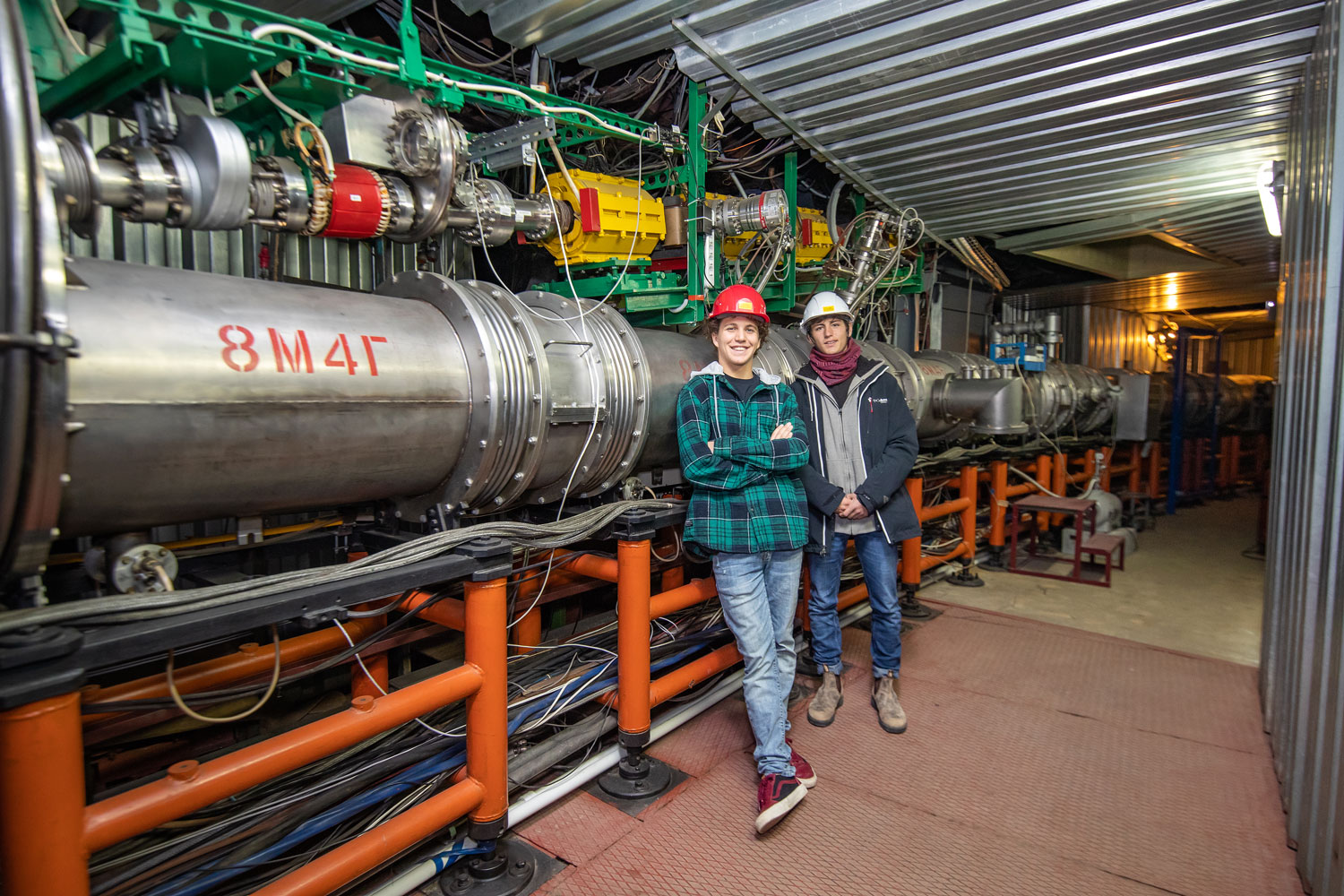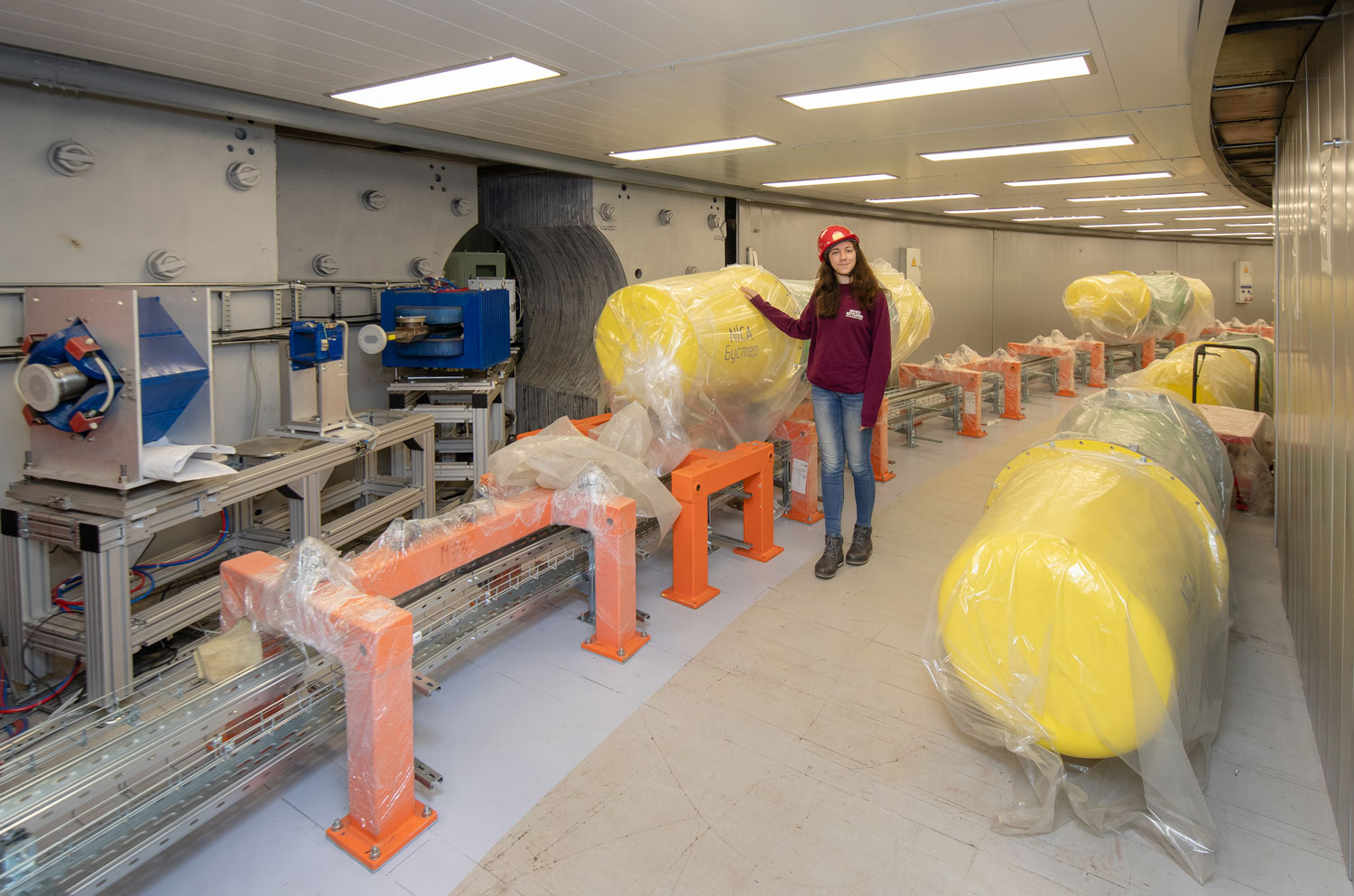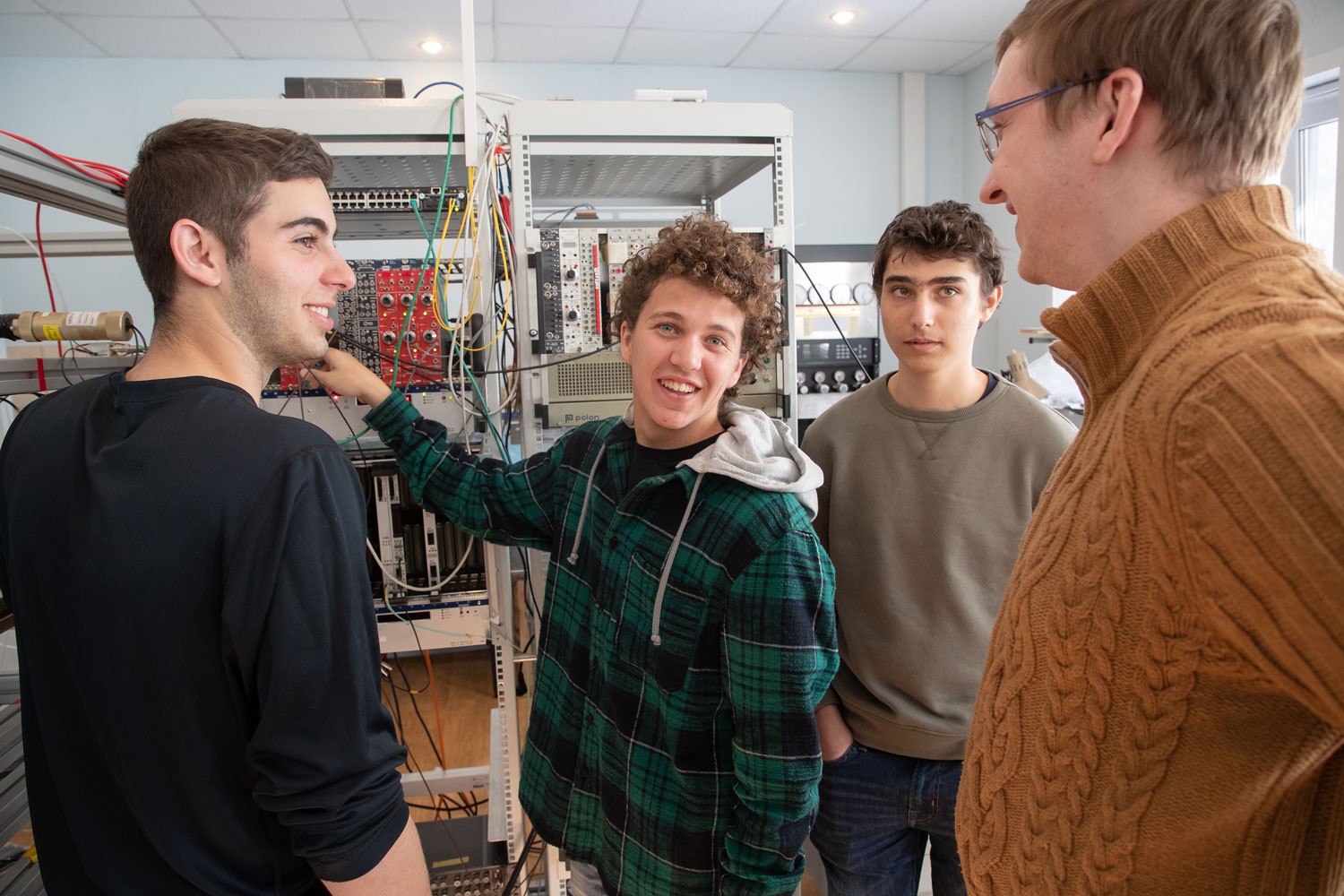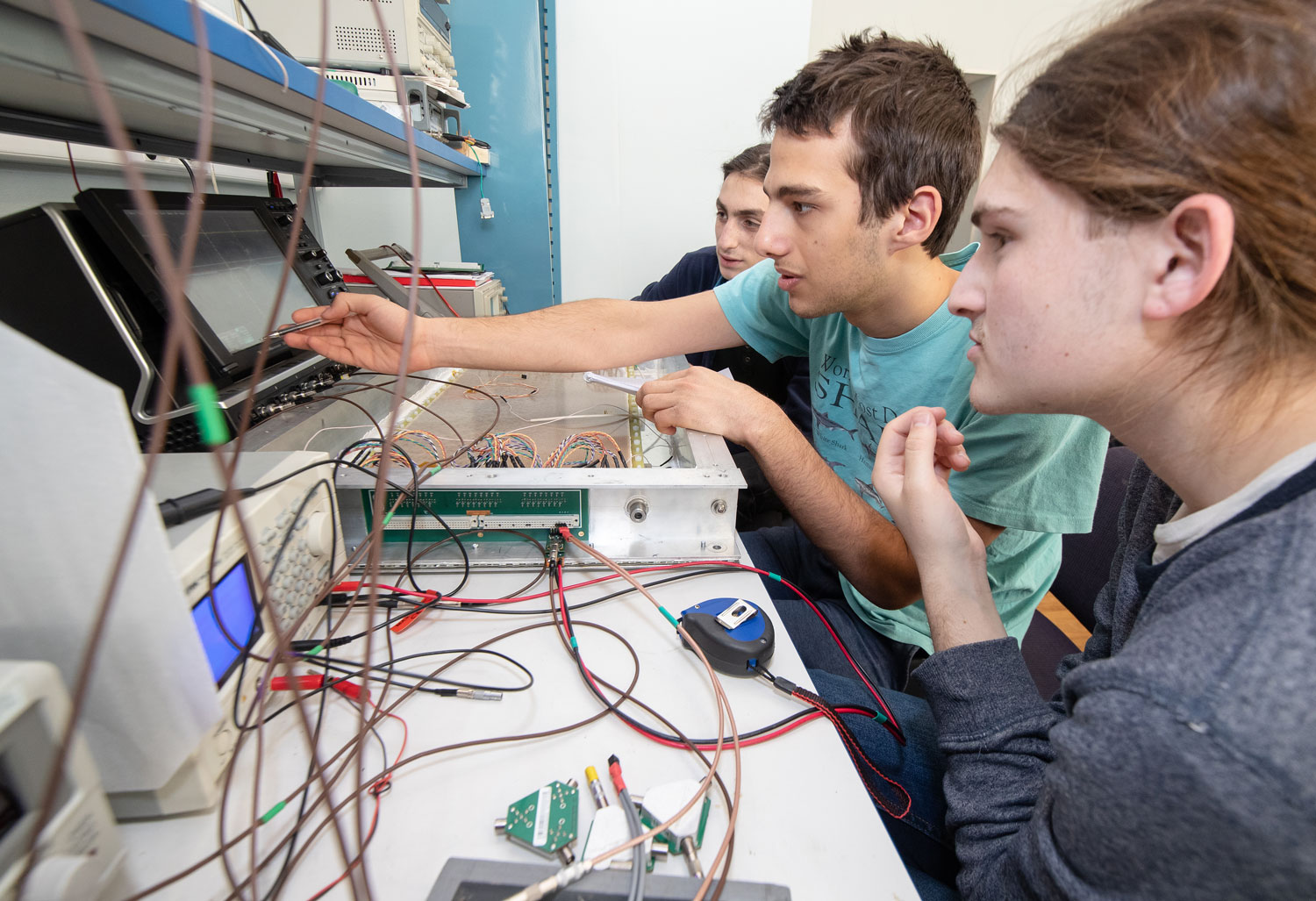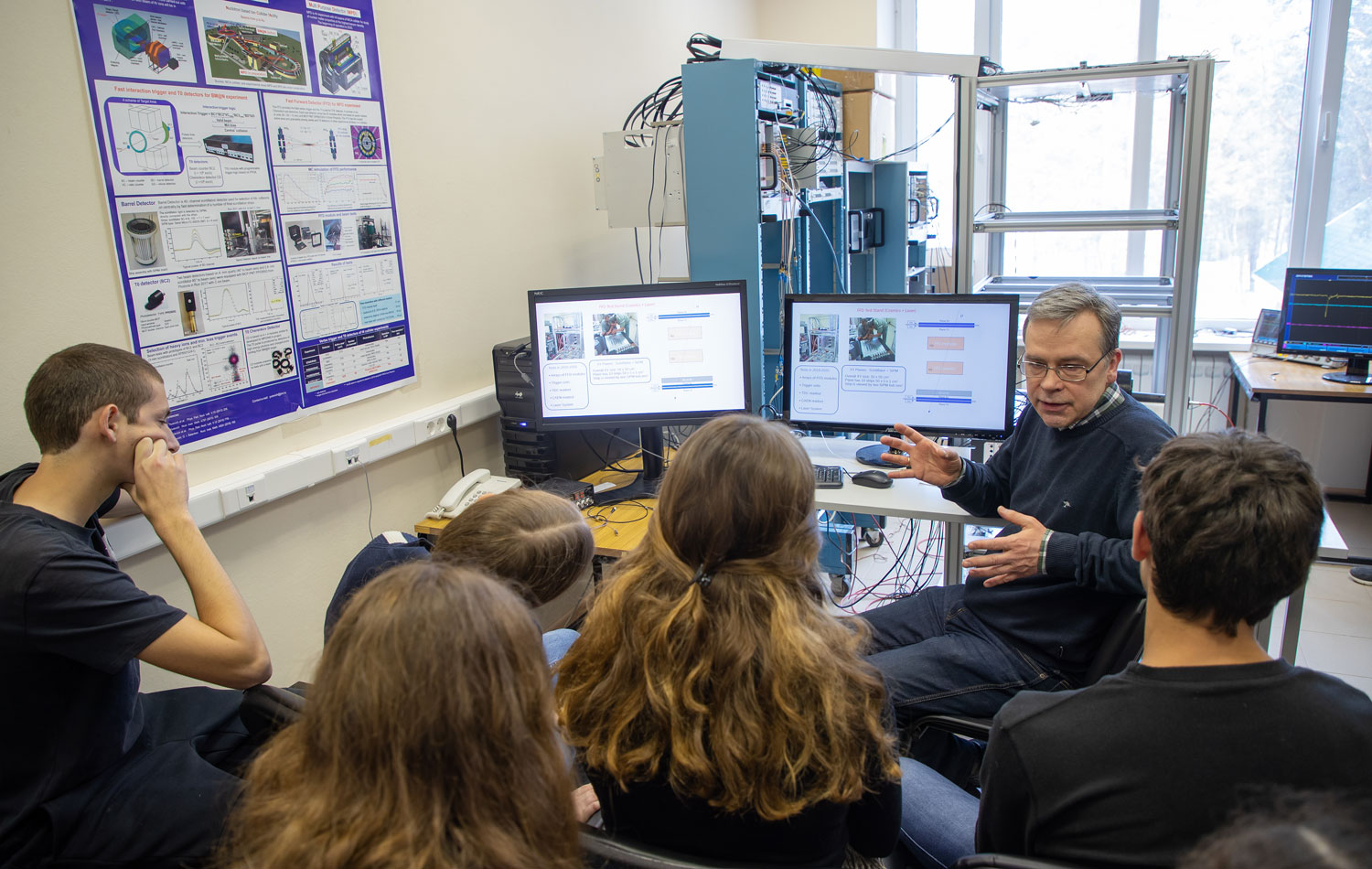3-day visit of school students from Israel
Education, 21 March 2019
On 11 – 13 March 2019, 14 graduate students and 3 teachers from the Science Education Center “HEMDA” (Tel Aviv, Israel) visited JINR. The main goal of the visit was to learn the main fields of scientific research conducted at the Institute and to participate in a series of lab works on the basics of experimental nuclear physics developed by the JINR staff members.
This is the second visit of Israeli students to JINR. The first one took place in April 2018. The lab work prepared for the visitors last year turned out to be a great success among the participants, so this year the Israeli teachers brought a new group of students to Dubna.
The Science Education Center “HEMDA” is an analogue of our physical and mathematical lyceums that pay great attention to research work. The students of the Center are well-trained in Physics and Mathematics; thus they were able to carry out the research work mainly intended for university students practice.
The acquaintance with the Institute started in the Visit Centre where Director of the JINR University Centre S.Z. Pakuliak greeted the guests and made an introductory lecture on the history, main research fields, and training programmes of JINR. The first day of the visit was spent in the JINR UC laboratory and was devoted to a specifically developed programme. The high-school students started their work with signal generators, oscilloscopes, coincidence circuits, scintillation counters, and finished the day with assembling a simple scintillation telescope that allowed them to register cosmic radiation particles. Moreover, the guests were offered to work with a semiconductor alpha spectrometer. This activity was supervised by Dr. V. Malaza (South Africa) and A. Strekalovsky (FLNR).
The second day of the visit of the Israeli group began in the Laboratory of Nuclear Reactions with a lecture by A. Karpov. During the lecture, he told the students about the discovery of chemical elements, introduced to the children the latest achievements made by FLNR scientists in the fields of fundamental and applied research, and shared the plans that the Laboratory staff is going to implement by means of the new accelerator DC-280 of the Factory of Superheavy Elements. The visit was continued with a tour to the accelerator IC-100, which was conducted by A. Voinov. During this excursion, the guests learned about the operation principles of the facility and applications of track membranes and nanostructures obtained using the accelerators.
In addition, the guests visited the “Dark Room”, the DLNP laboratory for testing photomultipliers for neutrino experiments, and the control room of the NOvA experiment. N. Anfimov told the visitors how scientists detect elusive particles and observe operation of the experimental facility located at the other end of the world.
The experimental programme for the guests in FLNR was developed under the guidance of Prof. Yu. Penionzhkevich. The leading specialists of FLNR S. Lukyanov and Yu. Sobolev, together with their younger colleagues K. Mendibaev, T. Isataev, and S. Stukalov supervised the lab work dedicated to measuring gamma radiation spectra and introduction to Moseley’s law on measuring the nuclear charge. In addition, they introduced to the students the real physical experiment aimed to study the properties of exotic nuclei.
The third day of the visit of the Israeli group was held at the Laboratory of High Energy Physics, involving the leading staff of the Laboratory A. Butenko, S. Kostromin, Yu. Murin, V. Yurevich, S. Sedykh, V. Golovatyuk, and I. Tyapkin. The guests visited the magnet factory, the Synchrophasotron, the Nuclotron, and the laboratory producing track detectors. The highlight of the day was work at the test benches, which are intended for building the MPD detector for the NICA collider. Under the guidance of young staff members V. Babkin, M. Rumyantsev, A. Dmitriev, B. Dabrowska, V. Rogov, and N. Lashmanov, the students performed a number of measurements.
N. Sidorov, D. Dementyev, and N. Anfimov gave bright multimedia lectures on colliders, physics facilities, and modern experiments.
The engineering and organizational work was carried out by G. Yarygin, G. Averichev, P. Semchukov, K. Klygina, and E. Karpova. The general coordination of the work was done by Head of the JINR UC Department of Development of Educational Programmes Prof. Yu. Panebrattsev and Director of the JINR UC S. Pakuliak.
The 3-day programme ended with awarding of certificates and souvenirs to the guests. After the closing ceremony, the guests gladly shared impressions of their visit to JINR.
Elena Simon, Physics teacher at HEMDA: “We had an opportunity to touch real experimental work here; it was the thing that we liked most about JINR. The experience of the last year showed that students were satisfied with lectures and excursions, but most of all they were impressed by hands-on activities. So this year we decided to concentrate on the practical part. This is the reason why we came back to JINR, and more likely we will come again in the future. We were able to show our students what modern experimental research is like. I would like to note that our group has been paid a lot of attention, we are very pleased and truly appreciate it. In our turn, we are trying to make our visit useful for the Institute, that is why we prepare and “tune” our students accordingly. It gives a possibility of testing the techniques that you develop, and, for our part, we are ready to give a feedback. The guys very appreciate the personality of G.N. Flerov. They took many photos next to his portrait because the great-niece of this outstanding scientist works in our Center. This cultural and historical connection of Dubna and Tel Aviv lives on, and our students always remember about it.”
Farber Arzi Orr, student: “We came here to see “Big Physics” and high technologies by our own. We had studied in theory the largest part of what we saw here, and it was great to be able to touch it. Staying in Russia is unforgettable not only because of the weather but also because of the culture. We could feel what it is like to be a part of JINR. We listened to lectures in English and joined the international team for several days thus feeling that we were a part of it. We enjoyed hands-on work very much: it turned out to be the most valuable part of the visit for me.”
Emile Mosseri, student: “We are doing an advanced course and we came here to see a real science center and do some experimental work. The brightest impression is the number of laboratories conducting large-scale research. It was cool to see large accelerators. Hands-on work was an invaluable experience; it was great. I observed experimental physicists at work. And the local weather: we are not used to it but it is so cool!”
Gigi Maor, student: “I am doing the “Research Physics” course. The purpose of our visit was to see things on a larger scale. There are no accelerators in our school, and here all my dreams came true. I am happy that I saw real research facilities and even had an opportunity to do some work by myself. It was fascinating! During the trip I learned a lot. I will recommend that my friends go to JINR.”
